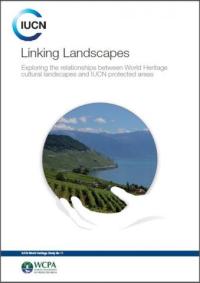Linking landscapes : Exploring the relationships between World Heritage cultural landscapes and IUCN protected areas
Complete Title:
Linking landscapes : Exploring the relationships between World Heritage cultural landscapes and IUCN protected areas

IUCN Publication
Publisher:
Organization(s):
Abstract:
This study identifies the relationships that exist between World Heritage cultural landscapes and protected areas, and documents the practical management and governance associations that occur between them. It looks at i) the conceptual similarities and differences between these two systems of conservation designations; ii) the spatial overlap between them; and iii) the practical interrelation and integration that occurs ‘on the ground’. The Hungarian Hortobágy National Park and Thingvellir National Park in Iceland are used as examples.
Monographic Series:
Monographic Series no.:
11
Imprint:
Gland, CH : IUCN, 2013
Physical Description:
20p. : ill.
Publication Year:
2013
ISBN:
978-2-8317-1640-4
Notes:
Includes bibliographical references.
Broad subject:
Call number:
Language(s):
English
Online Metrics:
Record updated: 2022/05/24
